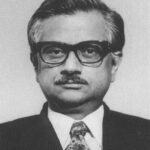Anna Hazare: The Crusader for India’s Anti-Corruption Movement
Anna Hazare is one of India’s most respected social activists, whose relentless fight against corruption and commitment to social justice have made him a household name in the country. His life’s work has inspired millions of people to stand up against systemic corruption, and his peaceful methods have created significant ripples in the political and social landscape of India. Hazare’s story is one of unwavering dedication to truth, justice, and equality. Let’s take a closer look at his life, impact, and significance.
Anna Hazare Early Life and Background
Anna Hazare was born as Kisan Baburao Hazare on June 15, 1937, in the small village of Bhingar in Maharashtra, India. Raised in a poverty-stricken family, Anna had little access to formal education but was keenly aware of the challenges faced by the underprivileged in society. He joined the Indian Army at the age of 17, where he served for about 15 years. During his time in the military, Hazare was deeply influenced by the disciplined environment and the values of duty and service, which later shaped his social activism.
After leaving the Army, Anna Hazare returned to his village and started working for the welfare of his fellow villagers. He focused on rural development, particularly on improving water conservation, education, and self-sufficiency. His success in transforming the village of Ralegan Siddhi into a model of sustainable development earned him recognition and set the stage for his future activism.
Anna Hazare’s Fight Against Corruption
Anna Hazare’s real contribution to national discourse began with his crusade against corruption in India. In 2011, Hazare launched a nationwide movement to demand the implementation of the Jan Lokpal Bill, which aimed to establish an independent anti-corruption body to investigate cases of corruption among public servants. This movement, known as the “India Against Corruption” movement, gathered millions of supporters across the country and led to massive protests, particularly in the capital city, New Delhi.
Hazare’s movement was marked by hunger strikes, peaceful protests, and widespread media attention. Despite facing resistance from the government, his perseverance and commitment to a corruption-free India became a rallying point for people frustrated with the prevailing corrupt practices in the political system.
The movement achieved significant success as it forced the government to take note of the Jan Lokpal Bill. Although the bill was not passed in the form that Hazare envisioned, his activism led to a shift in public awareness regarding the need for systemic anti-corruption measures. Hazare’s call for transparency, accountability, and the protection of whistleblowers resonated deeply with millions of people across India.
Anna Hazare Daily Life and Work Ethic
Anna Hazare’s daily life has always been simple and focused on his mission of social service. He is known for living in austere conditions and leading a life free from material comforts. His life in Ralegan Siddhi, where he has lived for most of his adult years, is a testament to his self-discipline and commitment to a life of service. Hazare often wakes up early, spends time with the people of his village, and works on various initiatives related to rural development, such as water management and education.
Anna is known for his strong work ethic and personal integrity. His way of life has earned him the admiration of millions, particularly in rural India. He has always been an advocate of sustainable living and has personally led initiatives that transformed Ralegan Siddhi into a model village. This transformation involved building a dam, promoting afforestation, encouraging rainwater harvesting, and adopting organic farming methods.
Anna Hazare Significance and Impact on Society
Anna Hazare’s influence on Indian society extends far beyond his anti-corruption movement. His work in rural development and village self-sufficiency has shown that positive change is possible even in the most underdeveloped areas. By reviving Ralegan Siddhi from a drought-prone village to a self-sustained community, Hazare demonstrated the power of grassroots activism and self-reliance.
Furthermore, Anna Hazare’s campaigns have had a profound impact on the Indian political landscape. His leadership in the anti-corruption movement highlighted the need for greater accountability from public officials and led to the creation of a nationwide conversation about governance, transparency, and citizen rights. Hazare’s work has also influenced political discourse, urging political leaders to be more accountable and responsive to the needs of the people.
Anna Hazare Observance and Legacy
Anna Hazare’s efforts have been widely observed and celebrated both within India and internationally. His anti-corruption movement in 2011 captured the attention of the media and drew significant international support. Hazare’s approach to non-violent resistance and his unwavering commitment to principles of honesty and integrity have made him a moral authority in the fight against corruption.
Hazare’s legacy is not limited to his political and social activism. He has inspired a generation of young people in India to actively participate in social causes, take responsibility for their communities, and stand up against injustice. His work in promoting rural development and sustainable living continues to influence policies and inspire individuals involved in similar grassroots projects.
Important Facts About Anna Hazare
- Anna Hazare’s name became synonymous with the anti-corruption movement in India.
- He successfully transformed his village, Ralegan Siddhi, into a model for sustainable rural development.
- Hazare led a nation-wide hunger strike in 2011, demanding the implementation of the Jan Lokpal Bill.
- His activism has inspired millions of Indians to take a stand against corruption and engage in public service.
- Hazare has been honored with numerous awards, including the Padma Bhushan, one of India’s highest civilian honors.
Anna Hazare Frequently Asked Questions (FAQs)
- What is Anna Hazare famous for?
- Anna Hazare is most famous for his leadership in the anti-corruption movement and his advocacy for the Jan Lokpal Bill, which aims to establish an independent body to investigate corruption.
- What has Anna Hazare done for rural development?
- Anna Hazare transformed his village, Ralegan Siddhi, into a model for sustainable living, focusing on water conservation, organic farming, and self-reliance.
- How did Anna Hazare impact India’s political system?
- Hazare’s anti-corruption campaign brought issues of transparency, accountability, and good governance to the forefront of national discourse.
- Is Anna Hazare still active in social causes?
- Although he is not as active in public protests as before, Anna Hazare continues to be involved in various rural development projects and public service activities.
Wishing and Conclusion: Anna Hazare
Anna Hazare’s life and work serve as a reminder of the power of individual action and the importance of standing up for what is right. His dedication to fighting corruption, promoting transparency, and improving the lives of rural communities has left an indelible mark on Indian society. As we reflect on his contributions, let us honor his legacy by continuing to uphold the values of honesty, integrity, and social responsibility in our own lives. Anna Hazare’s story is proof that even one person, with determination and courage, can bring about change.











h2ywnj